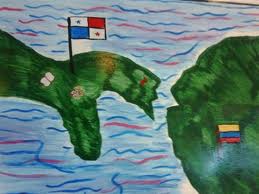the beginning (^▿^)
The American company United Fruit Company (UFC), had come to the banana zone of Magdalena in the early 20th century most of its plantations workers were linked indirectly through contractors. The November 12, 1928 one of the unions operating in the region launched the strike to pressure the solution of a list of nine points. This was not the first labor dispute in the area, because since 1918 had submitted resignations of work, but were partial or specific sectors such as rail or port dependent on the multinational.
The list of grievances began with three points called the fulfillment of Colombian laws and binding collective workers, accidents and sanitary housing insurance. Then 50% wage increase, cessation of loans commissaries and vouchers, weekly pay, collective bargaining and establishing more hospitals are required. Although only required to conform to the limited labor law, the UFC refused to negotiate.
Death in Cienaga (^▿^)
At the request of General Carlos Cortes Vargas, he was moved to the area as a military commander the day after the strike began, the local management of the UFC took half points vouchers and weekly payment. The rest is considered "illegal" or impossible to grant. Under these conditions the working environment deteriorated and permanent workers staged rallies, blockades and sabotage the railroad to the telegraph lines. As the conflict was not resolved Cienaga decided to concentrate on, but stopped picketing strikers throughout the area.
.jpg)
On the night of December 5 it was rumored that the governor was going to meet with workers to find solutions to unemployment, but it never came. For its part, the central government issued the Legislative Decree No. 1 declaring a state of siege in the area for disturbance of public order and appointed Cortés Vargas civil and military leader of it. This, once received the expected decree took possession on the run and issued at 11 and a half hours Decree No. 1 ordered dissolve "largest gathering of all three individuals" and threatened to shoot "on the crowd if the case. " Consequently, the one-thirty in the morning of December 6 formed before the troops concentrated in Cienaga. After reading the respective decrees and admonish the crowd to leave, he gave a period of five minutes it lasted for one more. According to Cortés Vargas "it was necesary to fulfill the law, and this was accomplished." The slaughter that followed is a matter of dispute, as well as what happened in the days following the fact that virtually ended the strike.

♪ ♪ ♪ (*^ω^*)ノ








.jpg)
